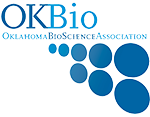By Jim Stafford
Copyright © 2018, The Oklahoman
As keynote speaker at last week’s Oklahoma Center for Science and Technology (OCAST) Health Research Conference, James A. Rogers III, with Mayo Clinic, delivered a sobering forecast for scientists seeking to commercialize discoveries made in their laboratories.
“It’s a bit of a roller coaster to be involved in this activity to take research to commercialization,” said Rogers, who is chair of the Mayo Clinic’s Department of Business Development.
“It’s absolutely worth it,” he said. “It’s something that can touch people’s lives in a very significant way, but it’s an absolute roller coaster.”
Rogers chairs the Business Development department for a world-renowned hospital that has developed a model to help health research-based ventures overcome obstacles to commercial success.
Mayo has generated 2,319 issued patents and spun out 159 research-based ventures. Technology commercialization efforts have returned $622 million in revenues to the Mayo Clinic over the years.
The lessons learned through Mayo’s business development efforts are just as applicable to Oklahoma researchers as they are to Mayo scientists in Rochester, Minn., Rogers told an audience of about 100 researchers who have received grant funding through OCAST’s health research programs.
Rogers’ presentation followed that of Carol Curtis, Ph.D., venture advisor and director of academic research assessment with i2E Inc., a not-for-profit Oklahoma company that provides mentoring and investment for Oklahoma entrepreneurs.
Curtis outlined the Oklahoma Innovation Model in which i2E and OCAST work hand-in-hand to help researchers move their companies toward commercialization. i2E provides business mentorship and manages about $60 million in investment capital deployed in Oklahoma startups.
“What Carol was trying to address and what we’re trying to address is what we call the Valley of Death,” Rogers said after watching Curtis’ presentation.
“It’s amazing that Oklahoma has figured that out and has got those resources available to you,” Rogers said. “We’ve got the same type of resources in place.”
In addition to equity investment, i2E, OCAST and the Oklahoma Catalyst Programs at the University of Oklahoma all team to help new ventures win grant funding through the federal SBIR program, which doesn’t require entrepreneurs to give up any equity in their companies.
Dr. Mary Beth Humphrey, M.D., Ph.D., a professor at OU’s College of Medicine and chair of the OCAST Oklahoma Health Research advisory committee, said Oklahoma’s Innovation Model and the Mayo Clinic business development department share striking similarities despite slight difference of emphasis.
“The biggest thing that was different between the Oklahoma model and the Mayo model is that our model provides non-dilutive funding at multiple stages early on so that the investigator or team can continue to have majority equity in whatever they are developing,” Humphrey said. “Otherwise, they are similar in how we are putting together ideas from investigators with early moneys to help them build that up.”
OCAST brought Rogers to Oklahoma through strong connections established with the Mayo Clinic by Manu Nair, vice president of technology ventures at the Oklahoma Medical Research Foundation.
Nair previously worked in business development for Mayo, and the Minnesota-based hospital has invested in an OMRF spinout, Progentec Diagnostics, Inc.
“They have a model where they can work with companies that don’t have any relationship or intellectual property with Mayo Clinic,” Nair said. “Like Progentec; that’s exactly what they did.”
Partnerships like this are vitally important because no one organization in Oklahoma has the resources to take a health technology to market.
“Rogers brought a welcomed perspective on Oklahoma’s economic development efforts in the area of health research,” said Michael Carolina, OCAST executive director.
“I think his comment about the Oklahoma Innovation Model is a validation that Oklahoma is on the right path for health research innovation and entrepreneurial activity,” Carolina said. “It’s making a difference not only economically and competitively, but most importantly in the quality of lives of our citizens.”
Jim Stafford writes about Oklahoma innovation and research and development topics on behalf of the Oklahoma Center for the Advancement of Science & Technology (OCAST).
Read the article at newsok.com
